Your body needs nutrients and calories to keep going, but let’s be real—what really satisfies you is flavor. That’s where spices come to the rescue! They pack a flavor punch, transforming your meals without adding extra calories. Healthy eating just got a whole lot tastier.
Spice blends are your shortcut to incredible dishes. With just a sprinkle, you can take your taste buds on a global adventure—try five-spice powder for bold Asian flavors, adobo for a Southwest kick, or pumpkin pie spices for that sweet-meets-savory cozy vibe.
Ready to level up your meals? We’ve put together the ultimate guide to help you choose, use and enjoy the best spice blends. Flavor awaits—let’s dive in!
Around the World
Let’s begin with a little explanation and background. Spices generally come from the flowers, fruit, seeds, bark, or roots of tropical plants.
For example, cinnamon is the powdered bark from a tree. Herbs, such as parsley and oregano, are leafy plants that can be grown in places like the U.S.
Some plants can be both. Cilantro leaves are an herb, for instance, and the plant’s seeds are ground up to make the spice coriander.
People have been using spices and herbs all the way back to the earliest human civilizations. Most spices originated in Asia and traders began bringing them from China and India to Europe in the Middle Ages. Spices became so valuable that the ships of Christopher Columbus and other explorers were funded so they could sail in search of shorter routes to Asia. In places such as India, certain spices have spiritual significance and are still used in religious ceremonies and festivals.
As different kinds of cuisines developed around the world, spice blends became associated with each of them. The tastes of the foods you love come mostly from the spices.
Health Benefits of Different Spices
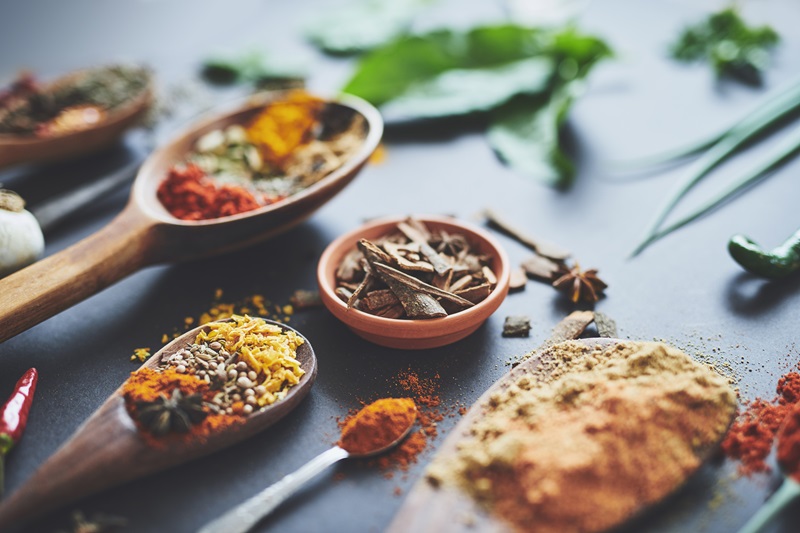
For as long as people have been adding spices to their meals, they’ve also been using them to boost their well-being. Modern medical research has confirmed many health benefits of spices, such as these.
Blood Sugar Levels
Cinnamon has been shown to help regulate your body’s glucose levels, moderating the sharp rise and fall that are a common problem for people who are overweight or have diabetes, according to an article titled “Cinnamon: Mystic Powers for a Minute Ingredient” in the journal Pharmacognosy Research.
Cognitive Functioning
Turmeric has shown to prevent or slow the onset of Alzheimer’s disease and dementia, according to an article published in the Annals of the Indian Academy of Neurology.
Heart Strength
Cayenne pepper will tingle your tongue and lower your risk of heart attacks and stroke, according to a report in the journal Open Heart. One study found that people who regularly included cayenne pepper in their meals were 13 percent less likely to die from a heart-related problem.
Immune System
The active ingredient in garlic, allicin can “deactivate viruses such as influenza B, herpes simplex viruses 1 and 2, rhinoviruses [or colds], plus inhibit growth of a broad range of parasites,” says a report from the American Society of Microbiology. Garlic also inhibits fungal infections such as Candida.
Joint Inflammation
Turmeric’s effects on brain functioning may be related to its ability to reduce inflammation. For similar reasons, the spice been found to reduce symptoms of arthritis, according to a study in the journal Drug Design, Development and Therapy.
Nausea
If your mother gave you ginger ale when you had an upset stomach, she knew that ginger eases nausea. “The best available evidence demonstrates that ginger is an effective and inexpensive treatment for nausea and vomiting,” report a research team in Integrative Medicine Insights.
Weight Loss
Overweight people who took curcumin (the active ingredient in turmeric) twice a day for a month lost nearly 5 percent of their body fat, reduced their waistline by about 4 percent, and reduced their hip circumference by 2.5 percent, says a report in the European Review for Medical and Pharmacological Sciences.
A review of 14 studies of people who were overweight and obese found that those who supplemented with ginger lost more body weight and fat than those that didn’t, according to a report in Critical Reviews in Food Science and Nutrition. It showed ginger could “lower fasting glucose and insulin resistance, which causes your body to store extra blood sugar as fat and makes weight loss more difficult.”
Top Low-Calorie Spice Blends to Stock in Your Cabinet
When you season your food with a mix of different spices and herbs, you add deeper layers of flavor. Each bite can be spicy, sweet, smoky, earthy, salty and more. Try some of these blends to give your meals more flavor.
Adobo

Flavor: Zesty and savory
What: You may find regional differences, but the basics of Adobo seasoning are paprika, black pepper, cumin, onion powder, garlic powder and oregano.
Try: Adobo seasoning is commonly used in Latin American cooking as a dry rub or marinade, with oil and vinegar, for meats. Season chicken breasts with adobo before grilling or roasting. Add a few dashes to guacamole or sauteed peppers and onions for fajitas. Try our Chicken Tinga recipe!
Berbéré
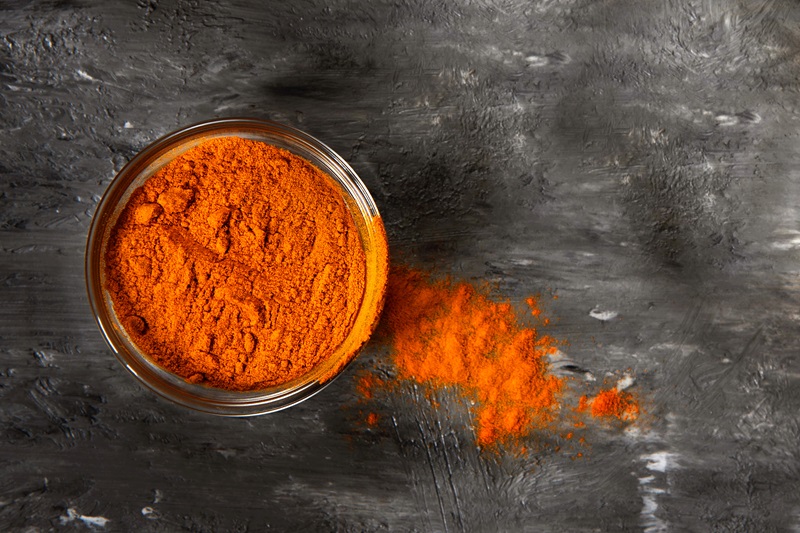
Flavor: Smoky, sweet and peppery
What: Pronounced “bear-ba-ray,” this blend includes red pepper, cloves, ginger, coriander, rue, allspice, fenugreek, nutmeg, cinnamon, black pepper, onion and garlic.
Try: In Ethiopia, berbéré is essential for seasoning lentils and other bean dishes, stews and roasted meats. You can mix it into mac and cheese or stir it into humus for a little extra zing.
Five-Spice Powder

Flavor: Sweet, salty, bitter, sour and umami.
What: To achieve the ideal balance of these flavors, this blend includes cinnamon, fennel seed, cloves, Sichuan peppercorns and star anise.
Try: The taste you love in stir-fries, noodle dishes and soups comes from five-spice powder. Add it to brown rice or in any grain bowl. Give applesauce a pop of flavor with a sprinkle of this blend.
Garam Masala
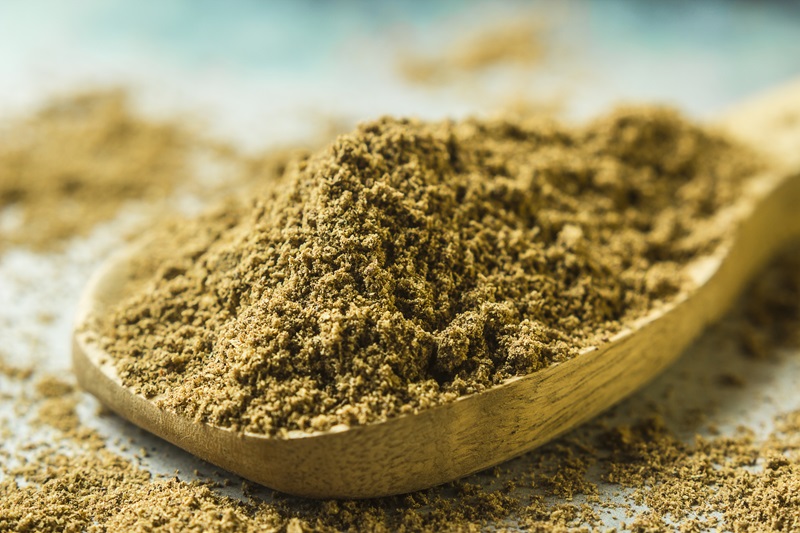
Flavor: Warm, aromatic and sweet.
What: The consistent ingredients are cinnamon, cumin, cloves and nutmeg. Depending on the region of India, the blend may also include peppercorns, cardamom, mustard seeds, coriander seeds, caraway seeds and mace. The ingredients are typically toasted to enhance their flavors before they are ground up into powder.
Try: Curries, or traditional South Asian stews, are flavored by garam masala. Give a boost to roasted butternut squash or cauliflower florets. Sprinkle it on omelets. Whip it into nonfat yogurt for an instant zesty veggie dip. Try our Chicken Tikka Masala Soup recipe!
Jerk
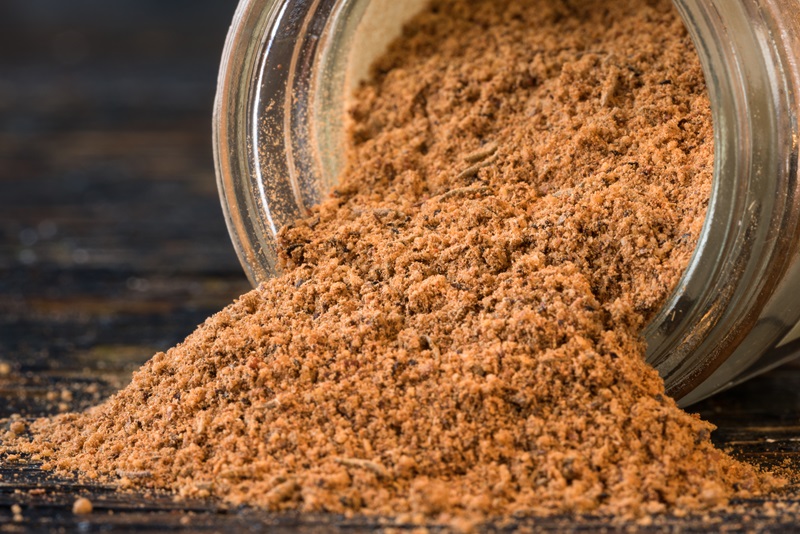
Flavor: Sweet, savory and fiery.
What: The heat in this Caribbean standard comes from Scotch bonnet and cayenne peppers, while allspice, nutmeg and cinnamon supply the sweetness. Garlic and onion powders bring the savory notes.
Try: Jerk chicken is an essential taste of Jamaica, and you can also use jerk seasoning on grilled fish such as salmon. Stir it into tuna salad. Season red beets before roasting for a taste that’s extra sweet and zingy. Try our Baked Jerk Chicken Street Tacos recipe!
Pumpkin Pie Spice
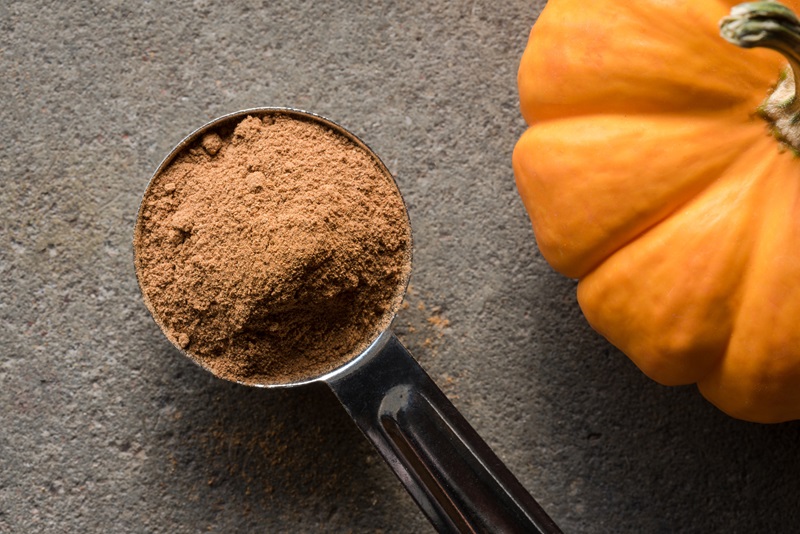
Flavor: Sweet, warm and fragrant.
What: Cinnamon, nutmeg, cloves and ginger, and sometimes allspice.
Try: Baked sweet potatoes taste like pie with pumpkin pie spice. Sprinkle it in coffee for a sweeter taste without added sugar. Mix it into whole wheat pancake batter. Check out our favorite healthy pumpkin spice recipes!
Za’atar
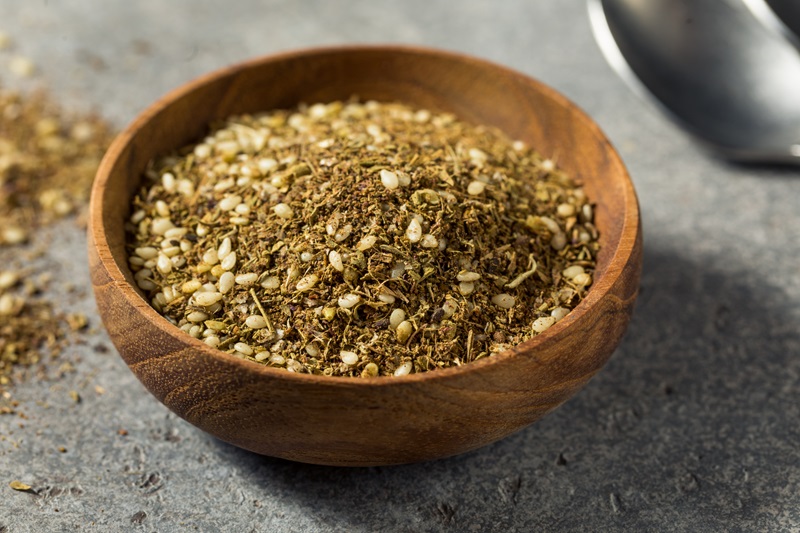
Flavor: Nutty, earthy and tangy.
What: Middle Eastern dishes are often seasoned with this blend of sesame seeds, caraway seeds, thyme, oregano, dill and marjoram. Dried sumac berries impart a lemony taste.
Try: Add Za’atar to roasted eggplant or other veggies for a richer flavor. Perk up the taste of avocado toast with a few shakes of za’atar on top. Brighten the flavor of mild, white fish like flounder or cod. Toss it with popcorn instead of salt. Try our Mediterranean Za’atar Salmon recipe!
Expert Tips for Cooking with Spice Blends

Use Spices Carefully
Spices have potent flavors, so use them carefully as you become familiar with them. When you’re using a spice blend, a good rule of thumb is to go with about two teaspoons per pound of other ingredients.
Timing is Critical
Timing is critical when cooking with spices. Spices used in blends are often toasted before they’re mixed, so they’ve been exposed to heat. Use these spices in the last few minutes of cooking to preserve the aroma and avoid burning them.
The Blooming Process
Blooming, sometimes called tempering, is a process of heating spices in hot oil to release and distribute their flavor as you cook. If you try this, heat the spices slowly and only for about 30 seconds to keep the flavor from dissipating.
Storing Spices
Spices will lose their potency over time, so buy only as much as you’ll use in a month or two rather than trying to stock up. Keep them fresh as long as possible by storing them in airtight containers in a cool, dark place.
Pairing Spices with Food
There are no hard and fast rules about which spices to use with different types of food. Start by thinking about the flavors of the ingredients you’re cooking with. Beef, pork and lamb pair well with spice blends that have a strong savory flavor, such as adobo or berbéré. For chicken, fish and vegetables, go with sweet tasting blends such as garam masala or jerk. Experiment to discover the combos you and your family like.
Adding Flavor to Nutrisystem Meals
Spices are an easy, calorie-free way to put a little more zip in your Nutrisystem meals. Try adobo to add more heat to a Chicken Enchilada. Make Merlot Beef with Root Vegetables extra savory with berbéré. Za’atar will take your favorite White Cheddar Mac and Cheese to a new place. In fact, almost every meal tastes better with a little spice blend.









